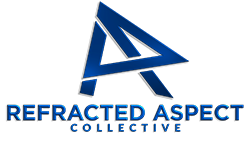
When a top sales professional exits, the immediate question isn’t just about replacing talent. It’s about understanding which part of the sales process will falter, how quickly, and what that means operationally. The risk isn’t theoretical; it’s a real, measurable disruption that can stall growth, frustrate teams, and erode client trust before anyone even notices.
- The Fragile Link: How One Departure Stalls the Entire Sales Cycle
- Root Cause: Embedded Reliance on Individual Knowledge Over Process
- Practical Shift for Lean Teams: Document and Delegate Early
- Scaling Teams: How Loss of a Top Performer Creates Cross-Functional Drag
- Fixing Mid-Flight: Creating Clarity and Structure Without Losing Momentum
- Preparing for Succession: Making the Sales Process Independent of Individuals
- Everyday Signs: What It Feels Like When Sales Processes Depend on One Person
- Frequently Asked Questions
- Reframing the Risk: Why Understanding Your Sales Process Fragility Matters
- Partnering with Refracted Aspect for Clarity and Control
The Fragile Link: How One Departure Stalls the Entire Sales Cycle
Consider a growing B2B services firm where the top sales rep owns the majority of client relationships and the nuanced knowledge of deal progression. This rep manages complex negotiations, anticipates client objections, and knows exactly when to escalate internally. Their departure leaves a void that isn’t just about lost revenue—it’s about a process that grinds to a halt.
Without this individual, proposals sit unsigned, follow-ups get delayed, and internal teams scramble for direction. The sales pipeline, once fluid, becomes a bottleneck. The rhythm of closing deals slows dramatically, not because the market changed, but because the operational cadence depended on one person’s unique approach.
In this scenario, the break happens fast—within days. The team’s inability to replicate the rep’s knowledge and relationships exposes a fragile process that was never designed to function independently of its star performer. The consequence is a stalled pipeline and a creeping loss of momentum that leadership only recognizes after the damage is done.
Root Cause: Embedded Reliance on Individual Knowledge Over Process
The persistent failure here isn’t a lack of talent or effort. It’s a structural flaw: the sales process is built around individual expertise rather than repeatable systems. This reliance on a single person’s judgment and relationships becomes invisible until that person leaves.
Teams often fall into this trap because it’s easier to let top performers run their own playbook than to codify every step. Leadership tolerates this because the results justify the means—until they don’t. The embedded habit of deferring critical decisions and client interactions to one individual creates a single point of failure.
This flaw embeds itself in daily operations. Other team members defer to the top rep, internal handoffs become informal, and knowledge sharing is minimal. The process appears functional but is brittle. When the key player exits, the absence reveals how much of the workflow was never truly owned by the team or the system.
Practical Shift for Lean Teams: Document and Delegate Early
For solo founders or small teams, the first meaningful shift is to stop assuming that knowledge lives in one head. Instead, start capturing critical sales steps and client insights in simple, accessible formats. This doesn’t mean building complex CRM systems overnight but creating a habit of documenting key interactions and decisions.
Delegation is equally important. Even if the team is small, identify who can take on parts of the sales process and empower them with clear guidelines. This reduces the risk that everything stalls if one person is unavailable. The goal is to create a minimum viable process that can function without heroic effort.
This initial adjustment is about resilience, not perfection. It’s a practical move that acknowledges resource constraints but prioritizes continuity. It’s the difference between a fragile pipeline and one that can absorb shocks without losing traction.
Scaling Teams: How Loss of a Top Performer Creates Cross-Functional Drag
In teams growing faster than they can stabilize, the departure of a top sales professional doesn’t just break sales—it ripples across marketing, customer success, and operations. Sales handoffs become unclear, marketing campaigns lose alignment with sales messaging, and customer onboarding slows as internal teams scramble to fill gaps.
This misalignment creates inefficiencies that compound quickly. Marketing may generate leads that sales can’t effectively convert without the top rep’s expertise. Customer success teams face increased churn because promises made during sales aren’t properly communicated or supported. Operations struggle with unpredictable demand and resource allocation.
Leadership often misses these connections because the symptoms appear in different departments. The real issue is a fragile sales process that depended on one person’s ability to bridge gaps and smooth transitions. When that person leaves, the cracks widen, dragging down multiple functions and slowing overall growth.
Fixing Mid-Flight: Creating Clarity and Structure Without Losing Momentum
For scaling teams caught mid-growth, the priority is to reduce friction without grinding the business to a halt. This means clarifying roles and responsibilities around sales activities immediately. Who owns follow-ups? Who manages client expectations? These questions need clear answers, not assumptions.
Communication channels must be streamlined. Overloaded operators need simple, repeatable processes that don’t require constant firefighting. This might mean standardizing sales handoff documents or creating quick alignment meetings between sales, marketing, and customer success.
The goal is to stop the drag caused by unclear ownership and patchwork processes. This isn’t about building the perfect system but about removing the bottlenecks that slow execution. It’s a pragmatic approach that balances structure with the need to keep moving fast.
Preparing for Succession: Making the Sales Process Independent of Individuals
When leadership faces succession, sale, or systemisation, the challenge is preserving institutional knowledge without relying on unspoken roles or habits. Long-standing sales stars often hold critical insights that aren’t documented, creating a fragile legacy.
The initial shift is to make these insights explicit and accessible. This means creating clear documentation of client histories, decision criteria, and negotiation tactics. It also requires leadership to acknowledge that no one person should be indispensable.
Preserving trust during this transition is key. Teams and clients need confidence that the business can continue delivering without disruption. The focus is on building a process that respects legacy but can stand on its own, enabling smoother handovers and reducing risk.
Everyday Signs: What It Feels Like When Sales Processes Depend on One Person
In daily operations, the reliance on a top sales professional shows up as recurring friction points. You hear phrases like “We’ll circle back on that later” or “Let’s wait for [Name] to handle this.” Follow-ups get delayed, and client questions bounce between team members without clear answers.
Corner-cutting becomes routine. Teams patch processes with manual fixes or workarounds that only the top rep understands. There’s a quiet tension in meetings when critical decisions are deferred or when others hesitate to take ownership.
These small, repeated moments accumulate into a drag on performance. The business runs fast but never quite catches up with itself. The signs are subtle but persistent, signaling a process that’s too dependent on one person’s presence and knowledge.
Frequently Asked Questions
What’s the quickest way to identify which part of my sales process will break if my top rep leaves?
Look for where knowledge and decision-making are concentrated. If only one person handles key client relationships, negotiations, or internal escalations, that’s your fragile point. Review recent deals and see who’s been the single point of contact. The faster you spot these dependencies, the sooner you can start documenting and delegating.
How do I keep sales moving when I don’t have the resources to build complex systems?
Focus on simple documentation and clear delegation. Use shared notes, checklists, or basic CRM features to capture critical info. Empower team members with defined responsibilities, even if they’re small. The goal is to create a minimum viable process that keeps deals progressing without relying on one person’s memory or relationships.
Why do capable teams still struggle with this problem?
Because it’s easier to let top performers run their own playbook than to enforce process discipline. Teams defer to the star’s judgment, and leadership tolerates it because results come in. This embeds a single point of failure that only becomes visible when that person leaves. It’s a structural habit, not a talent issue.
What’s the impact on other departments when sales processes break?
Marketing loses alignment with sales messaging, customer success faces churn from unmet expectations, and operations struggle with unpredictable demand. The break in sales creates a ripple effect that drags down multiple functions, slowing growth and increasing internal friction.
How do I start preparing for succession without disrupting current sales momentum?
Begin by making critical sales knowledge explicit and accessible. Document client histories, decision criteria, and negotiation tactics. Clarify roles and responsibilities so others can step in smoothly. This initial shift preserves trust and continuity without requiring a full overhaul or pause in sales activity.
Reframing the Risk: Why Understanding Your Sales Process Fragility Matters
When a top sales professional leaves, the cost isn’t just lost deals—it’s the hidden drag on growth, the stalled momentum, and the operational chaos that follows. Ignoring this risk means accepting a fragile process that can’t sustain success independently.
Addressing this issue shifts your perspective from reactive firefighting to proactive resilience. It reveals how much your sales process depends on individuals rather than systems and highlights where to focus your efforts for lasting stability.
This question—what breaks if your top rep leaves and how fast—is one of many diagnostics that leaders must engage with to build a business that can thrive beyond any single person’s contribution.
Partnering with Refracted Aspect for Clarity and Control
Refracted Aspect works with founder-led and leadership-driven businesses that already have traction and the accompanying weight of responsibility. These are operators who know their market, feel the operational strain, and want an outside perspective sharp enough to see what they can’t.
A Discovery Call with Refracted Aspect is exactly that: a practical, working discussion between peers who’ve both been in the trenches. We’ll talk about the internal dynamics you’re seeing, the challenges you’re working around, and the objectives that matter most.
















